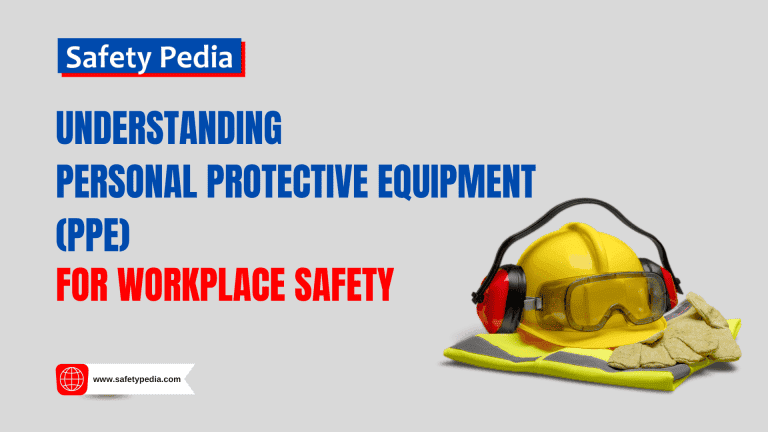
Introduction-Effective Fatigue Management For Shift Workers
Shift work, especially night shifts, can severely impact physical and mental health, often resulting in extreme fatigue and increased injury risk. Effective fatigue management is crucial for night shift workers to maintain their health and performance. In this article, we will share 10 essential tips for effectively managing fatigue for shift workers.
One key tip is to establish a consistent sleep schedule. This means sleeping and waking up at the same times every day, even on days off. This helps regulate the body’s internal clock and promotes better quality sleep.
Another important tip is to create a sleep-friendly environment. This includes ensuring a dark, quiet, and comfortable space to sleep in, as well as implementing relaxation techniques, such as meditation or reading, before bed.
Proper nutrition is also vital for combating fatigue. Night shift workers should focus on consuming balanced meals that provide sustained energy throughout their shifts. Staying hydrated is equally important, as dehydration can exacerbate fatigue.
Additionally, incorporating regular breaks and exercise into the work schedule can help combat fatigue. Taking short walks or doing stretching exercises can provide an energy boost and improve circulation.
By implementing these 10 essential tips, night shift workers can effectively manage fatigue and improve their overall well-being. Stay tuned for more expert advice on maintaining optimal health while working non-traditional hours.
Understanding the impact of night shift work on fatigue
Working during the night disrupts the body’s natural sleep-wake cycle, also known as the circadian rhythm. This disruption can lead to sleep disorders, decreased alertness, and an increased risk of accidents. Fatigue is a common consequence of night shift work, as the body struggles to adjust to the altered sleep patterns. Understanding the impact of night shift work on fatigue is the first step towards managing it effectively.
One way to manage fatigue is by recognizing the signs and symptoms. These can include excessive sleepiness, difficulty concentrating, irritability, and decreased performance. By being aware of these indicators, night shift workers can take proactive measures to prevent and manage fatigue.
Implementing strategies to improve sleep quality is another important aspect of fatigue management. Night shift workers should create a sleep-friendly environment that promotes relaxation and restorative sleep. This includes ensuring a dark, quiet, and comfortable space to sleep in. Additionally, incorporating relaxation techniques, such as meditation or reading, before bed can help calm the mind and prepare the body for sleep.
Importance of effective fatigue management
Effective fatigue management is crucial for the overall well-being and safety of night shift workers. Fatigue impairs cognitive function, decreases reaction times, and increases the risk of accidents and errors. By implementing effective fatigue management strategies, employers can create a safer work environment and protect the health of their employees.
Moreover, managing fatigue can also improve job satisfaction and productivity. When employees are well-rested and alert, they are more likely to perform their tasks efficiently and effectively. This, in turn, can lead to higher job satisfaction and reduced turnover rates among night shift workers.
Identifying the signs and symptoms of fatigue
Recognizing the signs and symptoms of fatigue is essential for early intervention and prevention. Night shift workers should be vigilant in assessing their own fatigue levels and seek support when needed. Some common signs of fatigue include excessive yawning, difficulty staying awake, and microsleep episodes (brief periods of unintentional sleep).
In addition to physical signs, it is important to pay attention to cognitive and emotional symptoms of fatigue. These can include difficulty concentrating, memory problems, increased irritability, and mood swings. Identifying these symptoms allows night shift workers to take appropriate measures to manage their fatigue effectively.
Here is a comprehensive list of signs and symptoms of fatigue among shift workers
| Sign or Symptom | Description |
| Extreme fatigue and difficulty concentrating | Shift workers who are fatigued may feel excessively tired and struggle to focus on tasks. |
| Excessive sleepiness during the day | Even after getting some sleep, shift workers may feel very sleepy throughout the day, especially during times they would normally be awake. |
| Disrupted sleep patterns and insomnia | Shift work can make it difficult to fall asleep and stay asleep at night. |
| Irritability, mood swings, and difficulty controlling emotions | Fatigue can make people more irritable and prone to mood swings. They may also have difficulty controlling their emotions. |
| Decreased alertness and reaction time | Fatigue can impair alertness and reaction time, which can increase the risk of accidents and injuries. |
| Headaches, dizziness, and blurred vision | Physical symptoms of fatigue can include headaches, dizziness, and blurred vision. |
| Weakened immune system and increased susceptibility to illness | Fatigue can weaken the immune system, making shift workers more likely to get sick. |
| Digestive problems, including constipation or diarrhea | Fatigue can also contribute to digestive problems, such as constipation or diarrhea. |
| Changes in appetite and weight | Some people who are fatigued may eat more or less than usual, which can lead to weight changes. |
| Increased risk of accidents and injuries | When people are fatigued, they are more likely to have accidents and injuries. |
| Decreased work performance and productivity | Fatigue can impair concentration, judgment, and decision-making, which can lead to decreased work performance and productivity. |
| Social isolation and withdrawal from activities | Shift work can disrupt social connections and make it difficult to participate in activities that people enjoy. This can lead to social isolation and withdrawal. |
| Depression and anxiety | Fatigue is a common symptom of depression and anxiety. Shift work can also increase the risk of developing these conditions. |
10 Essential Tips for Effective Fatigue Management
Shift work can be physically and mentally demanding, often leading to chronic fatigue. However, with proper management strategies, shift workers can significantly improve their well-being and productivity. Here are 10 essential tips:
1. Implementing effective shift scheduling strategies for reducing fatigue
Effective shift scheduling is essential for reducing fatigue among night shift workers. Employers should consider implementing strategies such as limiting the number of consecutive night shifts, providing adequate rest days between shifts, and allowing for shorter shifts when necessary.
Additionally, involving night shift workers in the scheduling process can help accommodate individual preferences and promote a sense of control over their work-life balance. If possible, opt for slow shift rotations to allow your body to adjust gradually. Forward rotation (e.g., days to evenings to nights) is generally better tolerated than backward rotation. This collaborative approach can contribute to better fatigue management and improved job satisfaction among night shift workers.
You may discuss flexible scheduling options with your employer to accommodate your sleep needs. Inquire about available support resources, such as on-site wellness programs or counseling services.
2. Establishing a healthy sleep routine for night shift workers
One key tip for managing fatigue among night shift workers is to establish a consistent sleep schedule. This means sleeping and waking up at the same times every day, even on days off. Maintaining a regular sleep routine helps regulate the body’s internal clock and promotes better quality sleep.
Additionally, implementing relaxation techniques, such as deep breathing exercises or listening to calming music, can help signal to the body that it’s time to sleep. To optimize sleep quality, it is also advisable for night shift workers to limit exposure to bright light before bed. This includes avoiding screens, such as smartphones and laptops, as the blue light emitted from these devices can interfere with the body’s natural sleep-wake cycle. Instead, engaging in activities that promote relaxation, such as taking a warm bath or reading a book, can help prepare the body for sleep.
3. Nutrition and hydration tips for combating fatigue
Proper nutrition is vital for combating fatigue and maintaining energy levels throughout the night shift. Night shift workers should focus on consuming balanced meals that provide sustained energy. This includes incorporating a variety of fruits, vegetables, whole grains, lean proteins, and healthy fats into their diet.
Avoiding heavy meals before bedtime is recommended, as digestion can disrupt sleep. Instead, consuming lighter meals that are rich in vitamins, minerals, and antioxidants can help sustain energy levels during the shift. Foods such as nuts, yogurt, oatmeal, and whole grain crackers are great options.
Stay hydrated by drinking plenty of water throughout the shift. Dehydration can exacerbate feelings of tiredness and decrease cognitive function. Night shift workers should aim to drink plenty of water throughout their shift and avoid excessive consumption of caffeine and sugary drinks, as these can disrupt hydration levels.
4. Incorporating physical activity into the night shift schedule
Regular exercise is beneficial for combating fatigue and improving overall well-being. Night shift workers should prioritize incorporating exercise into their daily routine, even during non-work days. Engaging in at least 30 minutes of moderate-intensity exercise, such as brisk walking or cycling, can help boost energy levels and improve sleep quality.
During the night shift, taking short breaks for stretching exercises or quick walks can provide an energy boost and improve circulation. These activities can also help combat muscle stiffness and reduce the risk of musculoskeletal injuries associated with prolonged sitting or standing. Exercise can help regulate sleep patterns, but avoid intense workouts close to bedtime.
5. Light Exposure
Exposure to natural light is crucial for maintaining the body’s internal clock, also known as the circadian rhythm. This rhythm influences sleep-wake cycles, hormone release, and other bodily functions. Daylight exposure, especially in the morning, helps signal to the brain that it is time to be awake and alert. Natural light contains blue wavelengths that are particularly effective in regulating the circadian rhythm. Spending time outdoors during the day, or positioning oneself near windows, can improve mood, increase alertness, and enhance overall well-being. Regular exposure to daylight can also improve sleep quality by helping to establish a consistent sleep pattern.
For those working night shifts or in environments with limited natural light, using bright artificial lights can help mimic the effects of daylight. These shift work lights are designed to emit a broad spectrum of light that includes blue wavelengths, similar to natural sunlight. By using bright lights during night shifts, workers can reduce feelings of fatigue and maintain better alertness and performance. Additionally, strategically timed light exposure can help shift workers adjust their circadian rhythms to their work schedules, potentially mitigating the negative health effects associated with irregular sleep patterns. This approach can enhance overall productivity and well-being for individuals with atypical work hours.
6. Creating a supportive work environment for managing fatigue
Creating a sleep-friendly environment is equally important. Night shift workers should ensure their sleep environment is dark, quiet, and comfortable. Investing in blackout curtains, earplugs, and a supportive mattress can make a significant difference in sleep quality.
Furthermore, promoting a culture that encourages open communication and support can help night shift workers feel comfortable discussing their fatigue-related concerns. Regular check-ins with employees can allow for early intervention and the implementation of appropriate strategies to manage fatigue.
7. Utilizing technology and tools for fatigue monitoring
Advancements in technology have provided tools and resources to monitor and manage fatigue among night shift workers. Employers can utilize fatigue monitoring systems and use artificial intellegence that track sleep patterns, alertness levels, and performance metrics. These systems can provide valuable insights into individual fatigue levels and help identify potential risks before they lead to accidents or injuries.
Additionally, wearable devices, such as smartwatches or fitness trackers, can provide real-time data on sleep quality, heart rate, and activity levels. Night shift workers can use this information to assess their own fatigue levels and make necessary adjustments to their sleep and activity routines.
8. Promoting mental well-being and stress management
Managing fatigue goes beyond physical aspects; it also involves promoting mental well-being and stress management. Night shift workers often face unique challenges, such as social isolation and disrupted personal relationships, which can contribute to increased stress levels and mental health issues. Practice relaxation techniques like meditation or deep breathing. Maintain social connections to reduce feelings of isolation. If fatigue is significantly impacting your life, consider consulting a mental health professional.
Employers should provide resources and support for mental health, such as counseling services or access to employee assistance programs. Encouraging self-care practices, such as mindfulness exercises or engaging in hobbies, can also help night shift workers manage stress and improve overall well-being.
9. Limit Stimulants and Prohibit Alcohol Consumption
Managing the sleep and fatigue of shift workers requires careful consideration of stimulant use. While caffeine and nicotine can provide temporary boosts in alertness, excessive consumption can lead to disrupted sleep patterns. Caffeine, found in coffee, tea, and many energy drinks, can stay in the system for several hours, making it harder to fall asleep if consumed too close to bedtime. Nicotine, present in tobacco products, is a stimulant that can also interfere with sleep by increasing heart rate and stimulating brain activity. Shift workers should be mindful of their intake of these substances, limiting them to the early part of their shifts to avoid negative impacts on their sleep when they need to rest.
Alcohol is another factor that can significantly affect the sleep quality of shift workers. While it might initially help with falling asleep due to its sedative effects, alcohol can disrupt the later stages of sleep, leading to a less restful and restorative sleep cycle. It can also exacerbate issues such as snoring and sleep apnea. Therefore, shift workers should prevent consuming alcohol. By limiting the intake of stimulants and alcohol, shift workers can improve their ability to achieve a more consistent and higher quality of sleep, which is essential for maintaining alertness, productivity, and overall health.
10. Educate family members to help protect the shift worker’s sleep
To effectively manage fatigue and prevent injuries among shift workers, it is important to inform family members about the unique sleep schedule and needs of the worker. Shift workers often need to sleep during the day when the rest of the household is active. Family members should be made aware of the importance of minimizing disturbances during these critical rest periods. Simple measures such as keeping noise levels down, avoiding loud conversations near the worker’s sleeping area, and refraining from household chores that produce significant noise can make a significant difference. Creating a household culture that respects the shift worker’s need for sleep can improve their overall rest and reduce fatigue, leading to better performance and safety on the job.
In addition to reducing noise, family members can help protect the shift worker’s sleep environment by assisting in creating a conducive setting for rest. This might include installing blackout curtains to block daylight, using white noise machines to drown out background sounds, and maintaining a cool, comfortable room temperature. Family members can also support the worker by managing household responsibilities during their rest periods, allowing the worker to focus on getting adequate sleep without additional stress. By understanding and supporting the shift worker’s need for rest, family members contribute to better sleep quality and overall well-being, which is essential for managing fatigue and preventing injuries in demanding shift work environments.
Conclusion
In conclusion, managing fatigue among night shift workers is crucial for maintaining their health, safety, and performance. By implementing these 10 essential tips, night shift workers can effectively manage fatigue and improve their overall well-being. Proper sleep routines, balanced nutrition, physical activity, and a supportive work environment are key components of an effective fatigue management strategy. Employers should prioritize the well-being of their night shift workers and provide the necessary resources and support to ensure their success. Stay tuned for more expert advice on maintaining optimal health while working non-traditional hours.
References:
https://www.hse.gov.uk/humanfactors/topics/shift-workers.htm
Join Our Safety Community!
Stay informed with the latest tips and insights on occupational health, safety, and the environment.







Great article on fatigue management for shift workers! It’s crucial to address the impact of long hours and irregular schedules on health and safety. The practical tips provided, such as proper rest, nutrition, and workload adjustments, are essential for maintaining productivity and well-being. This informative piece sheds light on a vital aspect of workplace safety that often gets overlooked. Thanks for sharing such valuable insights!
Thank you for taking the time to share your positive feedback! It means a lot to us, and it reinforces our commitment to providing valuable insights on often-overlooked aspects of fatigue management for shift workers.
This article is incredibly well-written and thoughtful. I appreciate how you’ve broken down the information into easily digestible sections while still covering the topic comprehensively. It’s rare to find content that balances detail with accessibility so perfectly.
It’s wonderful to hear such positive feedback! We put a lot of effort into making our content informative and accessible, so it’s truly rewarding to know that it hit the mark.